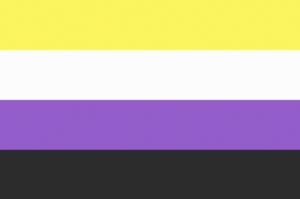Those who innovate in trying times are often the names that stick around.
Everyone agrees this year has been more trying than most.
But it could have been a whole lot worse without the innovators leading us through.
And when it comes to finance, Paul Golding, Senior Equity Research Analyst at Macquarie Group, has studied all the innovators making a difference in these uncertain times.
He joins me on the show to share his insights on the world we find ourselves in for 2020 and beyond.
We discuss:
- The biggest impacts COVID-19 is having on SaaS marketplaces
- Why debit use is exploding and credit has declined
- How PayPal has positioned itself post-pandemic
SaaS marketplaces and the pandemic
Most would agree that the move to digital marketplaces has been an inevitability for years now.
We would always get there eventually.
Then, along comes a pandemic and no one could afford to take their time anymore. It changed everything overnight.
But it wasn’t confined to e-commerce competing with legacy institutions — brick-and-mortar business was out for the foreseeable future.
“At the beginning of the pandemic, companies able to turn a brick-and-mortar, point-of-sale operation into a virtual marketplace were relied upon greatly. That allowed the momentum to continue, despite the struggles small businesses faced.” — Paul Golding
And SaaS payment ecosystems and online marketplaces came out on top.
Innovation leads
These ecosystems — like Square and others — were well-positioned to offer many essentials for post-pandemic payments.
And if these marketplaces weren’t already offering it, they were in the best place to start.
So, organizations already participating in these marketplaces obviously experienced a pandemic boon.
But they also helped the countless businesses and individuals who had suddenly found themselves needing to make the transition to digital at a record pace do so with minimal friction.
Innovation never stops
For SaaS marketplaces, looking to the future is why they were not only prepared for the pandemic but, ultimately, thrived throughout.
And that forward-thinking spirit of innovation obviously isn’t stopping.
Paul sees several key areas where these companies are investing as predictors for the future of digital payments.
Some things on his mind that are becoming pressing concerns are digital ad insertion, identification of users from CRM data, and delivery options for advertising, for example.
But one of the areas that most excites him is the merging of the brick-and-mortar world with online marketplaces and the opportunities that will provide.
Payments, digital billing, invoicing, payroll processing, and other services are all ripe with opportunity.
And while there is a lot of competition for any of these by themselves, offering it in a cohesive ecosystem can deliver quicker, more efficient, and much more seamless products across the whole landscape.
The rise of debit
For the consumer, the pandemic has also spurred on a number of trends in the financial world.
One of the most obvious is the skyrocketing use of debit among consumers — which is, of course, accompanied by a precipitous decline in credit use.
“With so many families struggling with their own household financial outlook, credit is seen as more dangerous.” — Paul Golding
Contactless currency
With all the uncertainty in light of the pandemic, this perhaps doesn’t come as a huge surprise.
But this increased debit use also comes at a time when contactless options are more than nice-to-haves — they are vital for both how consumers shop and how they pay.
The winners in this new paradigm are the companies helping customers do business online as well as those allowing for easier digital debit use.
Payments stimulated
Another factor that can’t be ignored for the rise of debit is the stimulus payments sent out nationally.
Companies that had the capability to help these funds get distributed were often tied to debit accounts.
So, whether it was a digital wallet attached to a debit account, Venmo Wallet, or a cash app, all of these innovations made a huge impact on already rising debit volumes at the expense of credit.
PayPal’s pandemic positioning
One company Paul points to as positioning itself particularly well in the pandemic is PayPal.
“PayPal has launched so many new products that have real tangible applicability through the pandemic and given people’s financial situations.” — Paul Golding
Many of the company’s products are capitalizing on all the trends we’ve discussed so far.
PayPal offers QR code functionality, has moved into cryptocurrency, has “buy now pay later” options, and even offers Venmo credit — all of which solve some of the many problems presented by the pandemic.
The QR code is particularly important given the trajectory the pandemic has put us.
PayPal already dominates online retail — accepted by 80% of online retailers — but the QR code helps the company bridge the gap between digital and brick-and-mortar commerce.
This provides an avenue for consumers to access all the payment solutions they expect when shopping online at their fingertips anywhere in the real world.
And with the expectations being set for consumers in the current climate, this will be a game-changer for the company when brick-and-mortar retailers inevitably bounce back.
To ensure that you never miss an episode of Payments Innovation, subscribe on Apple Podcasts, Spotify, or here and don’t forget to check out our YouTube!
Until next time!
———————————————————————————————————-


